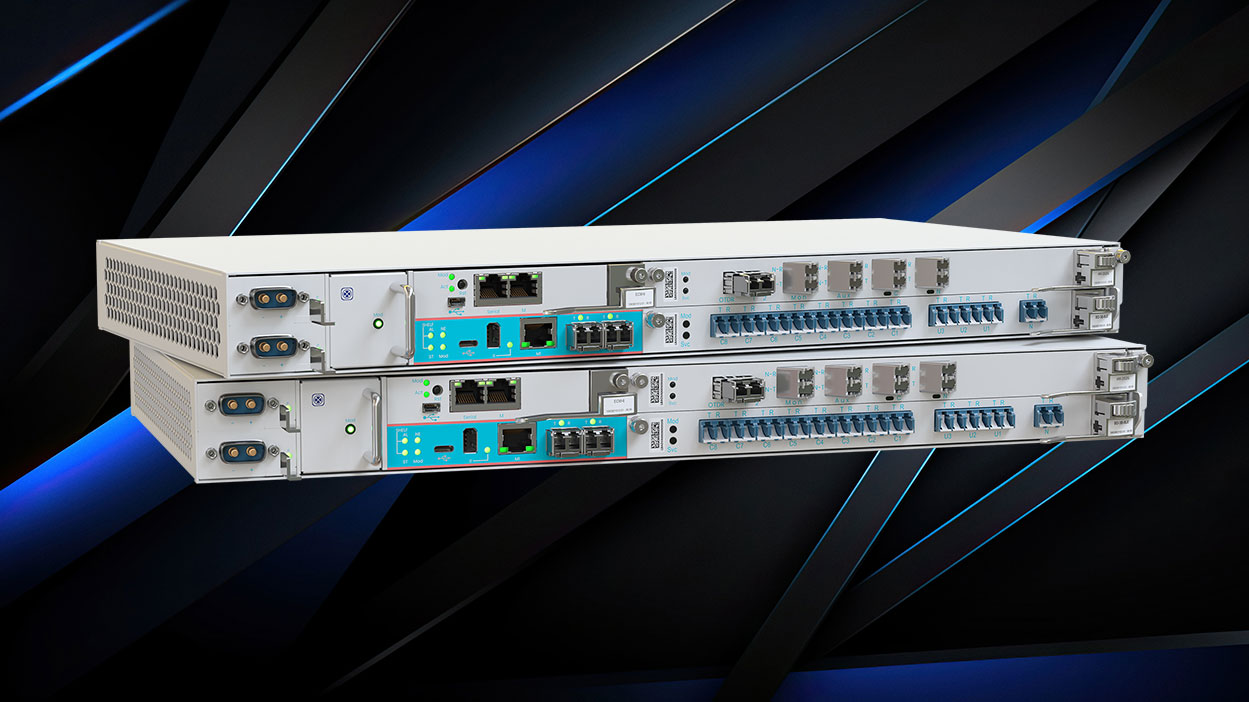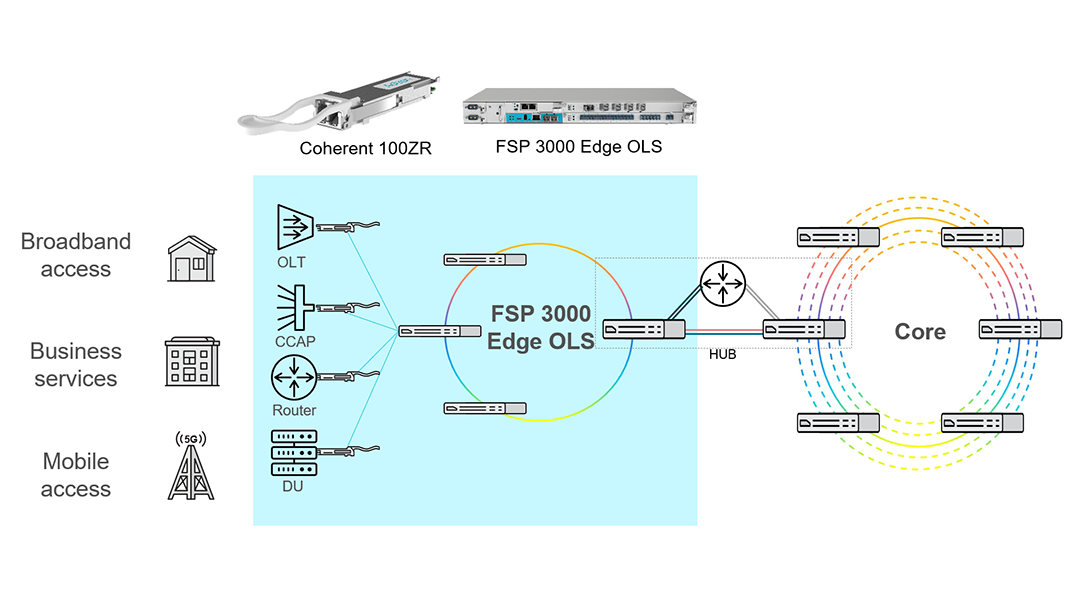Moving the optical layer into the spotlight
With a design optimized for low cost, power consumption and size requirements, ZR coherent pluggable optics (I include ZR+ variants in this term) are gaining prominence in edge aggregation and metro networks. They can be plugged into headend devices like routers or optical line terminals (OLTs), minimizing the volume of DWDM equipment. And, since they use a standardized wavelength grid and coherent modulation formats, coherent ZR wavelengths can be transported over existing open DWDM deployments. With all these advantages, it’s no wonder that more and more communication service providers and network operators are eager to introduce ZR coherent optics in their optical edge networks.
However, that’s easier said than done. Cost, power and size reductions come at the expense of optical performance. Among others, ZR coherent optics have a lower output power and FEC gain than traditional transponder-based coherent interfaces. This limits the number of use cases at the optical edge, where linear add/drop and hub-and-spoke topologies are predominant. In those networks, optical wavelengths must pass through one or more intermediate nodes without regeneration. Optical layer characteristics, like the insertion loss of its components, will strongly condition whether ZR optics can be used. The lower the insertion loss, the higher the transmission reach the coherent ZR optic can achieve. When planning new network deployments at the optical edge, users should choose an optical layer that leverages coherent ZR optics and maximizes their use cases.
Next-gen optical edge networks come with unique challenges
There are more requirements to consider.
Edge aggregation networks usually consist of hundreds or even thousands of nodes. Many are located outside the central office in places with stringent space and power constraints and no temperature control, such as street cabinets. Moreover, this type of installation only allows front access to equipment. This requires cost-efficient optical layer nodes that consume little power and space, use hardened components and have all modules and functions accessible from the front.
What’s more, next-gen optical edge networks must allow operators to easily accommodate changes in traffic demands. They need to meet day one traffic requirements at the lowest cost while enabling cost-efficient expansion to more wavelengths and higher data rates over time. They should also allow operators to change traffic patterns simply and economically.
Which type of optical layer can best meet those requirements?
Let’s see if traditional optical layer solutions can check all the boxes.
FOADM-based optical layers have been predominant in access networks since they are very cost-efficient. One critical box is checked! The problem with this approach is its limitations regarding flexibility and scalability. Fixed filter passbands limit the wavelength’s maximum baud rate and speed. For example, with 50GHz channel spacing, the optical layer can support speeds up to 100Gbit/s, however, speeds of 400Gbit/s would require more than a 50GHz channel spacing. Moreover, filters only give users access to a fixed number of wavelengths, making it challenging to change traffic patterns. On top of that, any configuration change requires manual on-site operation, for example, to add or replace filters or to reconnect the patch panel.
ROADM-based optical layers offer the highest flexibility. Among other benefits, ROADMs allow users to add/drop any wavelength at any node at any time and to quickly adapt to changes in traffic demands. Operators can reconfigure their network remotely within seconds. Moreover, with flexgrid technology, the spectral width of each wavelength is software-configurable. This allows the transport of any coherent speed and baud rate. For example, users can tune a wavelength bandwidth to 50GHz for 100Gbit/s and another to 75GHz for 400Gbit/s transport. Two boxes checked! However, despite these benefits, ROADMs are not widely used in optical edge networks since their cost, size and power consumption are usually too high for nodes at the optical edge.
Adtran FSP 3000 Edge OLS
Neither FOADM- nor ROADM-based optical layers can check all required boxes. This has motivated Adtran to develop a purpose-built optical layer: the FSP 3000 Edge OLS. This innovative open line system (OLS) designed for next-gen optical edge networks meets every single requirement:
- It’s a flexible optical layer with very cost-efficient, compact and low-power nodes.
- It’s been designed to efficiently deliver coherent wavelengths at the optical edge.
- It features purpose-built technology that expedites the use of ZR optics.
- It can easily scale from 100Gbit/s to higher speeds.
- It uses a carrier-grade and hardened design, enabling it to work in harsh environments.
- It has a modular architecture, letting users select the ideal component set for their requirements.
- It’s easy to set up and operate, with all modules accessible from the front and minimal cabling

